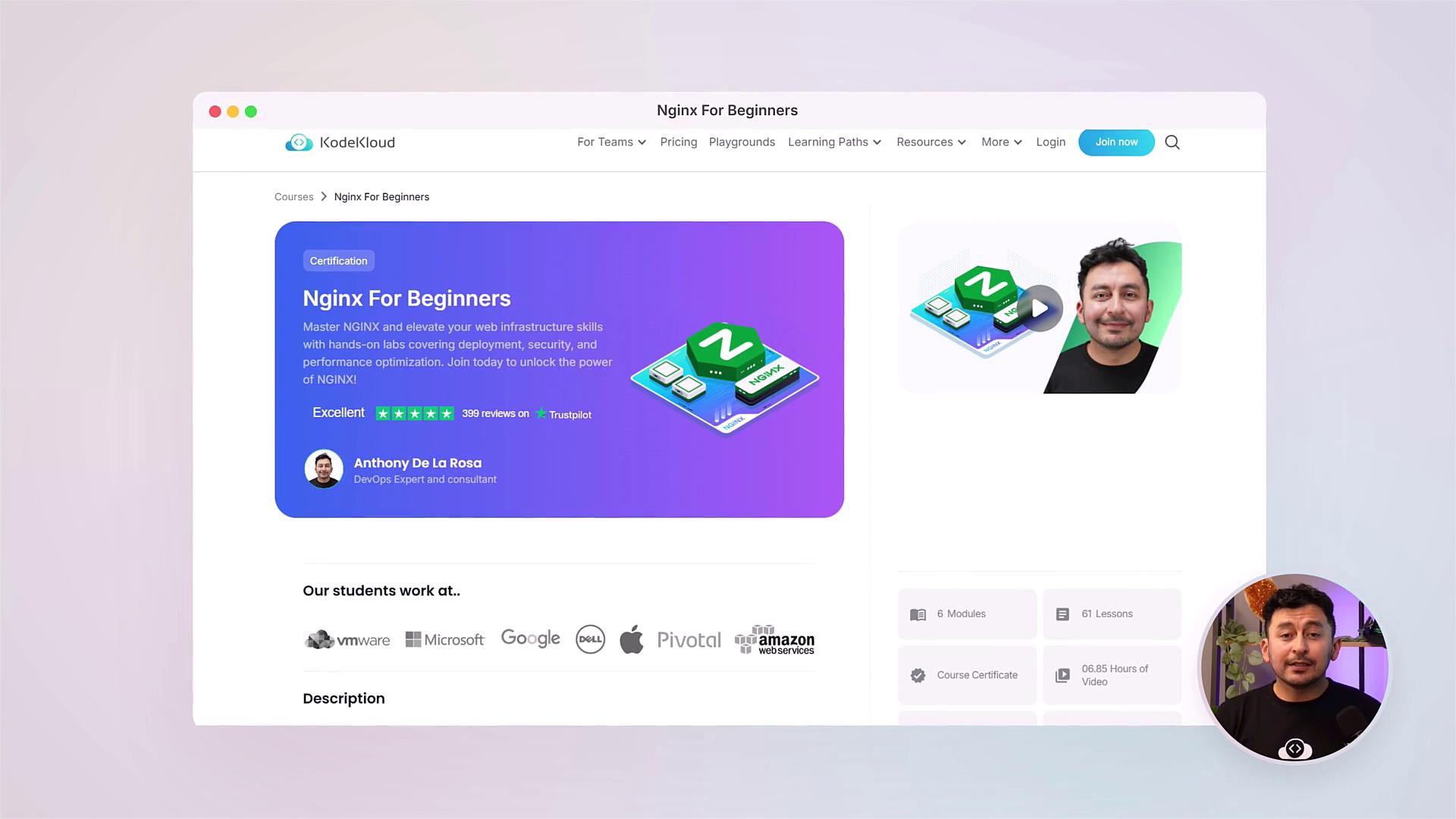Nginx For Beginners
Introduction
Introduction and Objectives
Introduction
Nginx is often hailed as the Swiss Army knife of web servers for its high performance, scalability, and versatility. Whether you're a web developer deploying static sites or a system administrator orchestrating complex, load-balanced environments, Nginx delivers unmatched speed and reliability.
Key Use Cases
| Use Case | Description |
|---|---|
| Static Hosting | Fast delivery of HTML, CSS, JS, and media files |
| Reverse Proxy | Distribute incoming traffic across multiple backend servers |
| Load Balancing | Automatically route requests to healthy servers |
| API Gateway | Secure and manage API traffic with rate limiting and authentication |
Welcome to this comprehensive Nginx tutorial brought to you by KodeKloud. I’m Anthony De La Rosa, and in this guide we’ll cover everything from foundational concepts to advanced configurations.

Note
Before you begin, ensure you have a Linux server (Ubuntu, CentOS, etc.) with sudo or root access and an active internet connection.
What You’ll Learn
By the end of this article, you’ll be able to:
- Understand web server fundamentals and discover what sets Nginx apart.
- Install Nginx, deploy your first site, and secure traffic with a firewall.
- Configure intermediate features—including virtual servers, redirects, load balancing, and reverse proxying—using real-world examples.
- Implement security best practices: set up HTTPS, manage HTTP headers, and add authentication.
- Optimize performance with rate limiting, content caching, compression, monitoring, and troubleshooting techniques.
Links and References
Watch Video
Watch video content